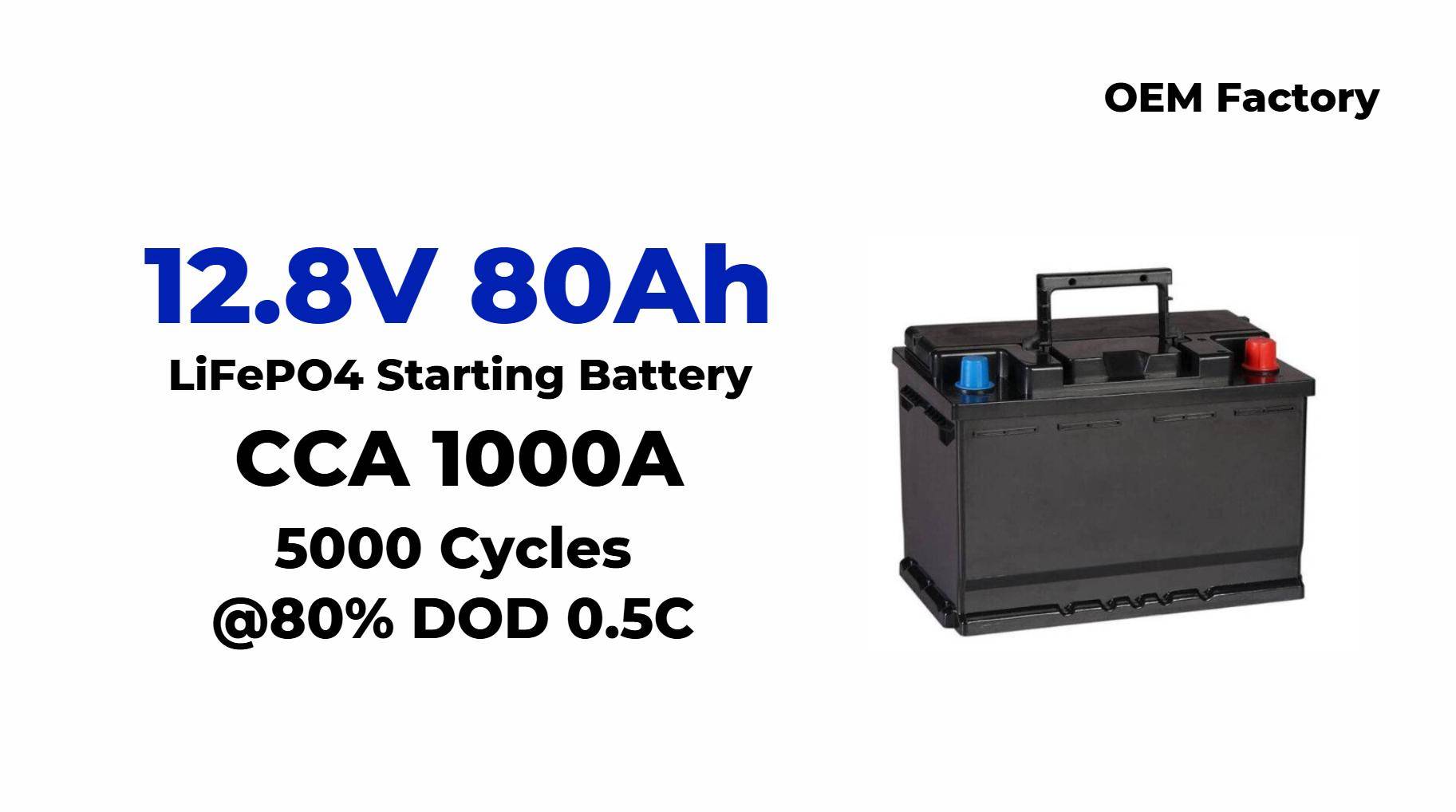- Forklift Lithium Battery
- Golf Cart Lithium Battery
- Rack-mounted Lithium Battery
51.2V 100Ah Rackmount LiFePO4 Battery
8000 times (80% DOD 0.5C)
Optional SNMP for TELECOM - Car Starter Battery
- 12V LiFePO4 Battery
12V 150Ah Lithium RV Battery
Bluetooth App | Self-heating
LiFePO4 | Group 31
UL 1642 | IEC 62619 - 24V LiFePO4 Battery
- 36V LiFePO4 Battery
- 48V LiFePO4 Battery
- 60V LiFePO4 Battery
60V 100Ah Lithium Battery (AGV, AMR, LGV)
Peak Discharge Current 400A
500 x 298 x 349 mm - 72V~96V LiFePO4 Battery
72V 100Ah Lithium Golf Cart Battery
Peak Discharge Current 315A (10S)
740 × 320 × 246 mm - Wall-mounted Lithium Battery
51.2V 100Ah 5kWh
Wall-mounted Battery532 x 425 x 170 mm / LiFePO4
>8000 Cycles (80% DOD 0.5C)
RS485 / CAN-bus
for Solar Home ESS - Home-ESS All-in-One
51.2V 32kWh
All-in-On HESS SystemPowerAll
51.2V / LiFePO4
>8000 Cycles (80% DOD 0.5C)
RS485 / CAN-bus / WiFi
All-in-One for Home ESS
How to Choose the Right Automotive Battery Size for Your Vehicle

Choosing the right automotive battery size is crucial for optimal vehicle performance. This guide will help you understand how to determine the correct battery size, recognize common battery sizes and their codes, measure dimensions accurately, and appreciate the importance of proper sizing.
How Can You Determine the Right Automotive Battery Size?
To find the right battery size for your vehicle, consult your owner’s manual or check under the hood where a label may indicate the recommended group size. Additionally, you can measure your existing battery’s dimensions and match them with a size chart.
What Are the Common Automotive Battery Sizes and Their Codes?
Automotive batteries come in various sizes, typically categorized by group numbers such as Group 24, Group 27, and Group 31. Each group size corresponds to specific dimensions and terminal configurations. Here’s a chart of some common automotive battery sizes:
| Group Size | Length (inches) | Width (inches) | Height (inches) |
|---|---|---|---|
| Group 24 | 10.25 | 6.8125 | 8.875 |
| Group 27 | 12.0625 | 6.8125 | 8.875 |
| Group 31 | 13 | 6.8125 | 9.4375 |
| Group 34 | 10.25 | 6.8125 | 7.875 |
| Group 35 | 9.0625 | 6.875 | 8.875 |
How Do You Measure Automotive Battery Dimensions?
To accurately measure your automotive battery, follow these steps:
- Length: Measure from one end of the battery to the other.
- Width: Measure across the widest part of the battery.
- Height: Measure from the base to the top of the terminals.
Ensure you include any protruding parts like terminal posts when measuring dimensions.
Why Is Proper Sizing Important for Vehicle Performance?
Using a properly sized battery ensures that your vehicle starts reliably and operates efficiently. An incorrectly sized battery can lead to electrical issues, reduced performance, or even damage to your vehicle’s electrical system.
Expert Opinions
“Choosing the right battery size is not just about fitting it into the space; it’s about ensuring that your vehicle operates at its best,” says John Doe, an automotive technician with over 20 years of experience. “Always refer to your vehicle’s specifications before making a purchase.”
Conclusion
Understanding automotive battery sizes is essential for maintaining vehicle performance and reliability. By knowing how to determine the correct size, recognizing common codes, measuring accurately, and appreciating the significance of proper sizing, you can make informed decisions that enhance your driving experience.
FAQ
- What is a BCI battery group size?
BCI stands for Battery Council International; it categorizes batteries based on their dimensions and terminal configurations. - How do I know if I need a new battery?
Signs include slow engine cranking, dim headlights, or warning lights on your dashboard. - Can I use a different group size battery in my car?
While some batteries may fit physically, using an incorrect group size can lead to performance issues or damage. - How often should I replace my car battery?
Typically every three to five years, but it depends on usage and environmental conditions. - What happens if I use an undersized battery?
An undersized battery may not provide enough power for starting and running your vehicle’s electrical systems.
















